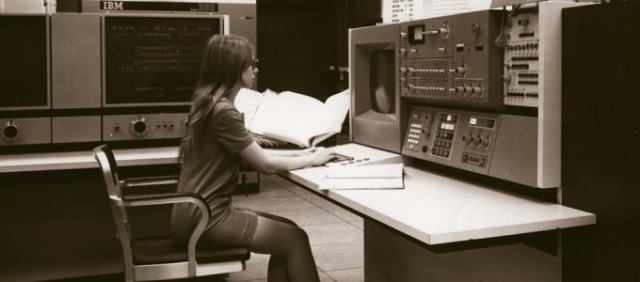Co-operation between British and American secret services on the one hand and telecommunication companies on the other goes back to the early 20th century. Best seller writer James Bamford did years of research in the field and shared the most important pieces of information at the 31st Chaos Communication Congress (31C3) in Hamburg. He had his book, The Puzzle Palace published in 1982, which was the first book ever about the National Security Agency (NSA) of the USA.
The writer noted that the foundations for today’s practice had been laid by the British at the beginning of the 20th century. The secret services of the British Isles already had access to cables located in the depths of seas at the time. They had an easy job as the networks were in state ownership. The Black Chamber, the Manhattan-based forerunner of the NSA, had a much harder job. The secrecy of letters was a constitutionally protected right in the United States of America in the 1920s, consequently, no action could have been taken without the co-operation of telecommunication companies.

Herbert Yadley, head of the agency at the time, contacted the major service providers and requested access to all networks. Western Union consented without thinking, while Postal Telegraph Headquarters and another company involved lawyers to discuss the issue. By the end of the first year he managed to persuade all the companies to co-operate.
Bamford added that due to growing concerns about data privacy, The Black Chamber was closed down in 1929, but it was re-established during World War Two, then it was closed down again in the mid-1940s. However, the idea of co-operation with the telecommunication industry was not dismissed. Preston Corderman, chief of the US Army Security Agency (ASA) attempted to negotiate with the companies, but the AT&T threw him out straight away when he put forth the idea. Western Union turned out to be helpful this time too, but like RCA it also insisted that the project should be put under the control of the Department of Justice. In the end AT&T was approached again and it gave in.
The NSA, built up nice and slow, set up its first secret office in New York and its staff appeared in the centres of telecommunication companies after midnight day after day. They entered and left through the backdoors, gathered telegrams and transcripts of telephone conversations, copied them, and the originals were returned to the centres before the morning shift started. The data that they obtained in this way were fed to a computer and the database could be browsed for names and various contents – without judicial authorization. However, RCA in the first place still insisted on written authorization. During the presidency of Harry S. Truman, General Dwight D. Eisenhower prepared a document and sent it to the company, but it was rejected by the management. James Forrestal, Secretary of Defence at the time, assured the RCA leadership in words that everything was in perfect order. Eventually, telecommunication service providers received a memorandum that was prepared by Truman but was signed only by Attorney General Tom Clark.
The activities of the secret services were first studied by the Church Committee of the US Congress in 1975. In the past, Bamford worked at a NSA station in Puerto Rico, where he was eye- and ear-witness to the intelligence service eavesdropping to the telephone conversations of American citizens. A project called Minaret focussed on alleged terrorists such as Jane Fonda, Muhammed Ali or Martin Luther King. Bamford informed Frank Church, chairman of the Committee, of his findings and his statement was confirmed by a number of NSA staff. Representative Bella Abzug condemned telecommunication giants for passing on the list of “target persons”. Donald Rumsfeld and Dick Cheney tried in vain, scandal was inevitably on the way.
It is worthy of note that the US Department of Justice prepared NSA’s criminal file in 1976, which, among other things, compared the entire agency to a criminal organisation similar to the mafia. Bamford recently shared his experiences with the online magazine The Intercept and now he is intent that a comprehensive criminal investigation be conducted against the NSA and the CIA. And contrary to the procedure of the Church Committee, law-breakers should be brought to court and sent to jail.
